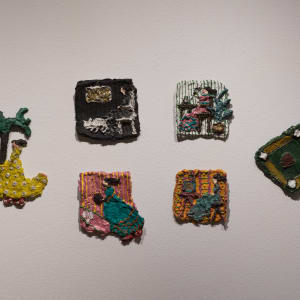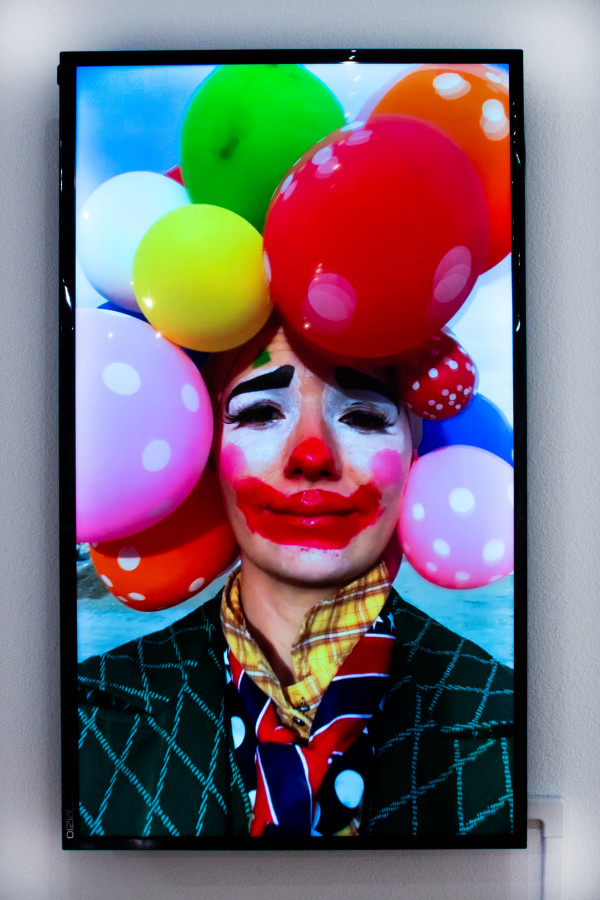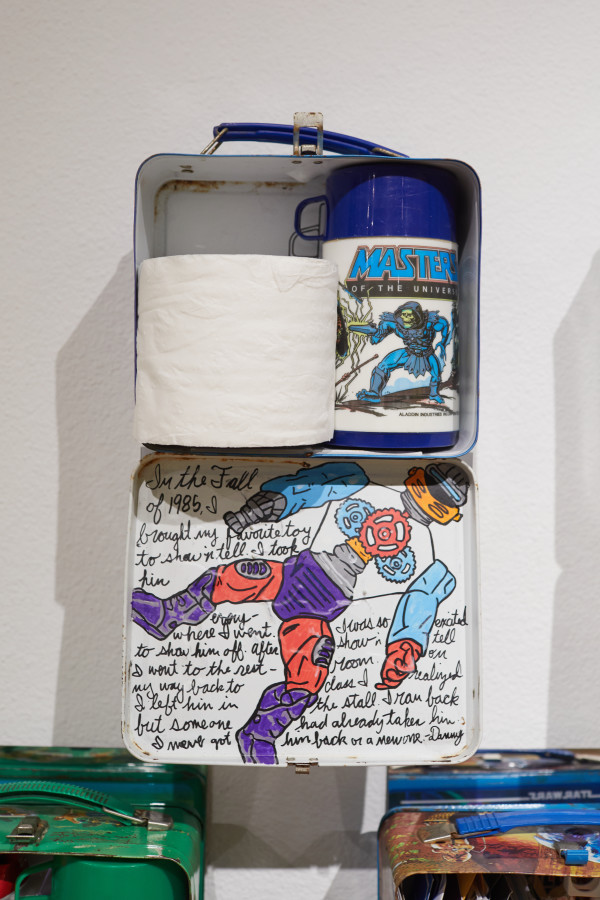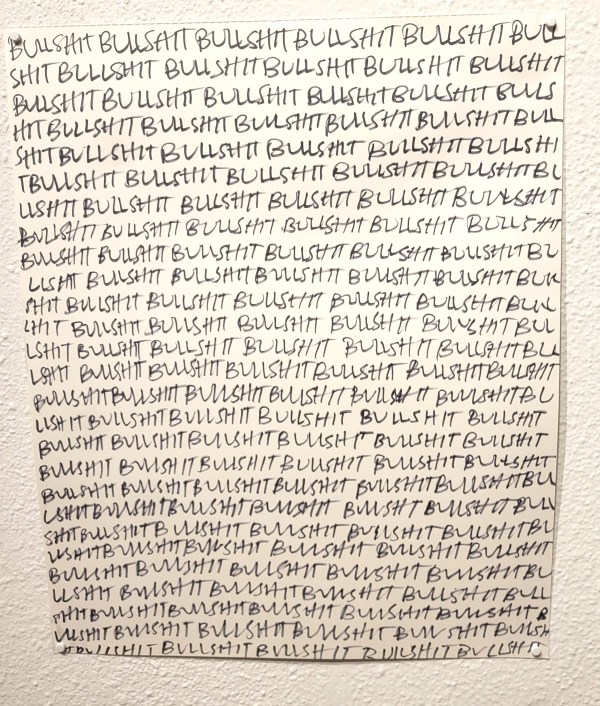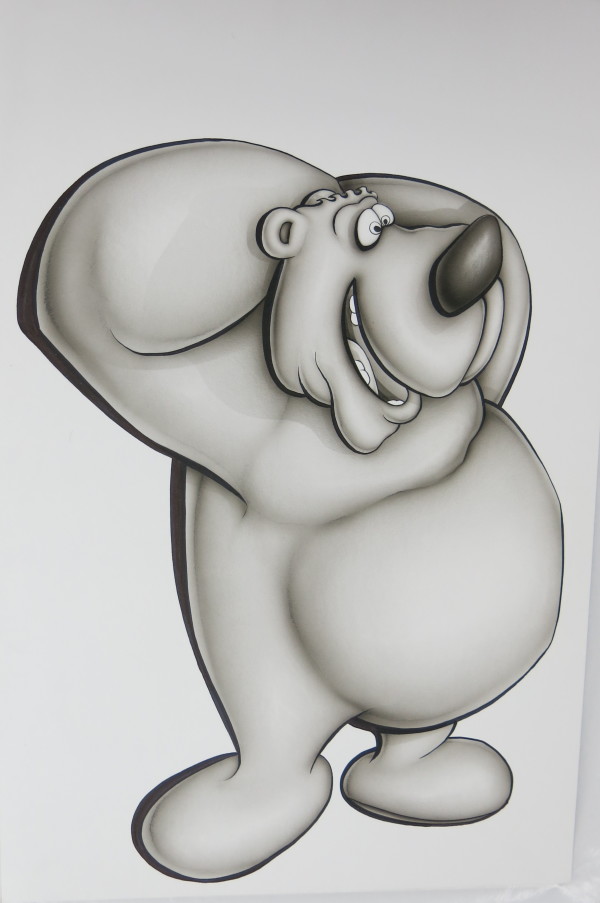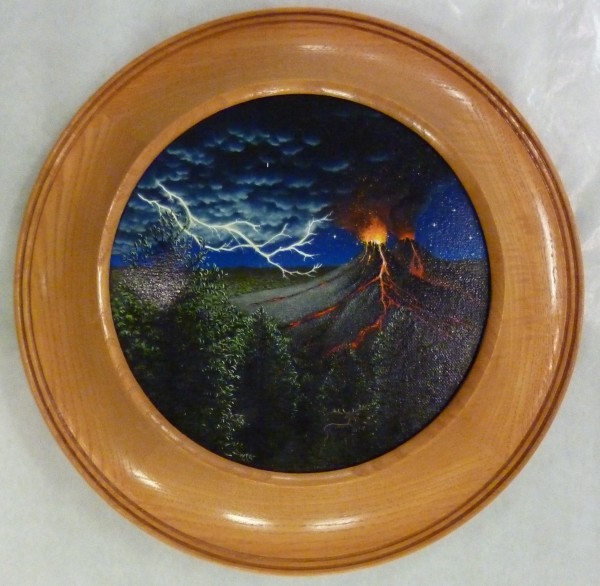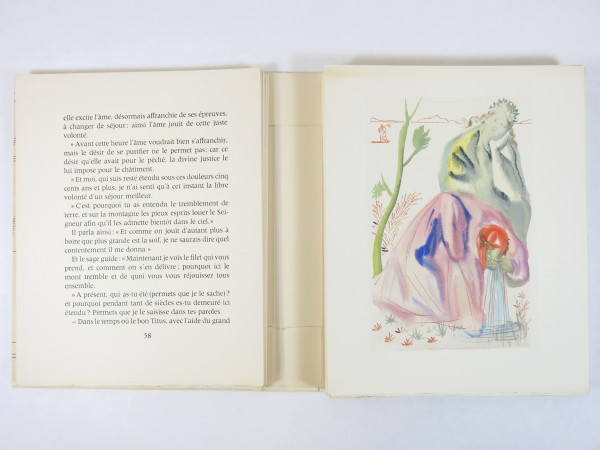
UNLV Marjorie Barrick Museum of Art
Las Vegas, Nevada
We believe everyone deserves access to art that challenges our understanding of the present and inspires us to create a future that makes space for us all.
Message- Claudia DeMonte (American, b. 1947)
- Claudia on the Telephone, 1983
- Acrylic, glitter glue on pulp paper
- 9 x 8 x 1 in
- Signature notes: Signed and dated on back in marker.
- Inv: 2020.10.001
-
Available
Claudia DeMonte
"Claudia on the Telephone", 1983
Acrylic, glitter glue on pulp paper
Marjorie Barrick Museum of Art Collection
Gift of Alessandro Figueroa
2020.10.001
“I started to make the doll figures be about me, but more universal. I was interested in all the things we do every day as women that art is never made about. It’s very different today. But, again, this is a long time ago. It was considered craft and not appropriate. You had to be serious; you couldn’t use certain materials. I mean the idea that you would use pulp paper, which is like a children’s clay material, and then make things about a woman’s daily life. Not the “important things” but the things we all spend hours a day doing that nobody honors.”
Claudia DeMonte in conversation with Melisa Christ and Alisha Kerlin, August 5, 2020.
Born in Astoria, New York, Claudia DeMonte received a BA at the College of Notre Dame in Maryland in 1969 and an MFA from the Catholic University of Washington in 1971. “First grade through graduate school a Catholic education,” she said when Liza Kirwin interviewed her in 1991. “Tons of my stuff comes from about being Catholic and the ritual around being Catholic and the colors of the shrines and the lavishness of benedictions.” Successful in Washington, DC, she moved to New York City in 1976 to join the larger art community there. In the same year she took part in Jane Livingstone’s international touring show, Liberation: 14 Women Artists “the really first big exposure I had on that level.” Her doll-making began at about the same time. “I loved making the [first] doll, and it was made to represent me ... it's evolved to being very universal.” Sometimes the dolls are washing dishes or vacuuming, “things that art wasn’t made about.” Irons, high-heeled shoes, and other stereotypically “womanly” objects recur in her work. She has collected and curated folk art, outsider art, and handmade dolls from different parts of the world. She puts neglected objects on display. New York’s East Village scene in the 1980s was sympathetic to her ethos, she told Kirwin, “the breakdown between high art and low art” suited her, and the Gracie Mansion Gallery was particularly supportive. The Vogels saw one of her early shows at the Pam Adler Gallery and Herbert telephoned her afterwards, asking if they could visit her studio. “They have great eyes,” she says, “they buy what they love and they pay better than any rich person I’ve ever dealt with.” DeMonte taught at the University of Maryland from 1972 to 2005 and her work has been collected by numerous museums. (DKS)


